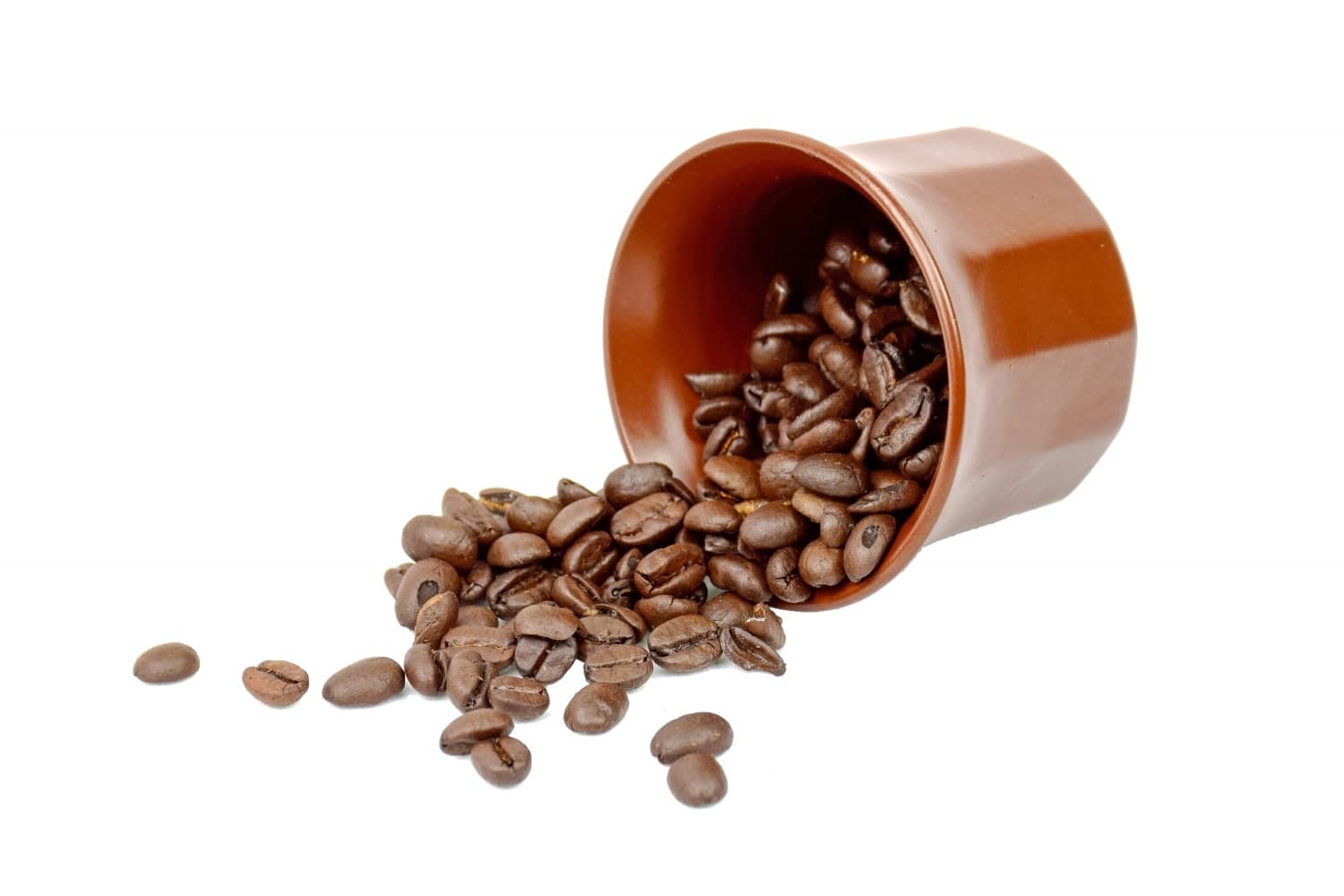Coffee brings happiness to many people, including early-morning risers and overly productive workers. The smell, the color, the brewing process, everything about it is enticing. If you are a fellow coffee lover, you may like to understand the basic elements of coffee preparation.
If you want to know more about coffee, we need to start at the root – the coffee beans. It is the main ingredient that brings you so much pleasure in the form of a comforting hot beverage. Keep reading to discover more about coffee preparation and brewing the perfect cup.
How Many Coffee Beans Per Cup?

To prepare one cup of coffee, you will need around 10.6 grams or 0.38 ounces of coffee beans. This means you will need two tablespoons of ground coffee per cup.
Using filtered water will help you brew the perfect cup. This is because filtered water does not carry all the flavorful minerals that unfiltered water has, so you can make sure you get the purest coffee flavor.
Also, make sure you are applying the right temperature, which is around 195-05 degrees Fahrenheit. This is important so that you don’t burn the beans, resulting in an acidic, bitter, and brunt flavor.
How Does Coffee Type Affect The Number Of Beans In A Cup Of Coffee?
There are several different types of coffee beans, each with a different shape, size, and weight. These factors influence the amount of beans you may need to fit into the coffee maker as well as your cup. Though it may sound simple, it can actually be trickier than you think.
While the variety of species may seem like an important factor in the beans’ weight and size, the growing conditions also play a crucial role.
Naturally as a consumer, you have no control over the growing environment; even within the same species of coffee bean, there will always be variations in shape, size, and weight. I’d recommend starting with average-sized beans and working your way up.
You will find the average roasted bean weighs about 0.1-0.15 grams. Note that the weight of ground coffee and full beans will still weigh the same. But remember that some species can be quite large, for example, “elephant” beans. You can find them around 0.4 grams each! Another thing to know is that heirloom varieties can be much smaller.
Making great coffee may depend upon several variables. Among them is the most important: The coffee-to-water ratios that you use when brewing. Too much water will dilute the taste and make your brew watery and unappealing, and if you add too little, it won’t allow the flavor of the beans to fill themselves out fully.
How to Measure Coffee Beans?
You can find coffee beans in a wide variety of weights and densities that come from many different parts of the world. To measure coffee, use a coffee scale so that you can get the perfect measurement and create the ideal cup.
Using Scale
If you want to get the precise weights, you’ll need a coffee scale or a digital kitchen scale. As stated above, the appropriate quantity of ground coffee beans is typically considered to be 0.38 ounces ( 10.6g), which is about two tablespoons of ground coffee in a six-ounce cup.
To get the perfect measurement, take a small glass, a plastic bowl, or a cup and put it on top of the digital scale. You can use the button “tare” or “zero” to subtract the weight of your container.
Next, you will have to pour the coffee beans slowly into the cup or bowl and check the display number on your scale.
After reaching the desired weight as per your scale, stop pouring the beans. Now, toss them into the grinder. After getting a medium grind, brew it in the coffee maker. The smaller the bean’s grounds, the more intense your drink will be.
Without Scale
To measure without a digital scale, you will have to first add four tablespoons of beans into your coffee bean grinder. For a single cup of coffee, measure two equal tablespoons and add accordingly, depending on your requirements.
Take note of the tablespoon count that was placed in the grinder. It will help you replicate the same amount later when you need to grind the beans again.
Importance of Coffee-to-Water Ratio
The coffee-to-water ratio refers to a weight-based formula. It indicates how much coffee and water you will need to use when brewing. The first digit in the ratio shows the amount of coffee you will need to add, and the second digit in the ratio indicates the amount of water you need to add.
For instance, a ratio of 1:18 indicates that you will need 18 milliliters of water for every one gram of coffee.
When preparing coffee, this ratio is incredibly important for creating the perfect balance of coffee and water.
If you prepare it according to the ratio, you should get a delicate balance that can be applied to any size of cup.
In other words, you can apply the same formula to make a single cup of coffee or to prepare enough coffee that fill the largest coffee pot in the world. It’s also helpful because it works both in the metric system and the US imperial system.
Remember, the first step to preparing an outstanding cup of coffee is finding the proper ratio. Next, we’ll look at the importance of the temperature and grind size.
Factors Influencing the Coffee-to-Water Ratio
Though the most important thing in coffee preparation is the coffee-water ratio, there are some other factors that may influence the process. These factors affect the flavor and can make your coffee less appetizing.
These variables include the size of the coffee grinds, the source of water, and the water temperature.
If you think your coffee doesn’t taste right, the best thing you can do is to change one variable at a time until you figure out the variable that’s negatively affecting the taste. The main things that may influence the coffee-water ratio are:
Measurement of Your Coffee
It’s crucial to make sure that you are accurately measuring your ground coffee to ensure it follows the coffee-to-water ratio. If the measurement of your coffee is right, the coffee-to-water ratio should be fine.
Coffee Grind
If the coffee tastes salty, sour, or flat, it is most likely under-extracted. This might happen if you are using coffee grinds that are too coarse. Grind your coffee beans finer to see if you can get any improvement in taste.
On the other hand, if your coffee tastes very bitter, it may be over-extracted. In this case, opt for a coarser grind so that it doesn’t affect the coffee-to-water ratio.
Water Temperature
Finally, the flavor of your coffee might be influenced by the temperature of the water. Water that is too hot could lead to the coffee becoming over-extracted, while water that’s too cold could result in coffee that’s been under-extracted.
If you want to extract the flavors correctly, warm your water to 195 to 205 degrees Fahrenheit.
FAQ’s
How many coffee beans are 10 grams?
As a general rule, coffee grounds of 10 grams equal 76 whole coffee beans. In other words, each coffee bean yields about ⅛ grams of fine-ground coffee.
How many coffee beans are in 1 cup of coffee?
A standard cup of coffee requires approximately seventy coffee beans to prepare, and ratios for coffee are usually set by rate rather than per bean.
How many coffee beans are in 1 kilo?
One pound of coffee contains approximately 4,000 beans thus, 1 kilo (2.2 lbs) equals about 8,800 beans.
How many coffee beans do we typically have per day?
You may have around 20 to 30 per day if you are not sensitive to caffeine or are pregnant. You can break that down into roughly 7 to 10 beans per serving, which is the amount of caffeine you’d get in an eight oz cup of coffee.
Final Words
Learning more about coffee beans and their preparation can help you create the perfect cup of coffee. The measurements are important for preparing a brew that isn’t too strong or too watery. As mentioned above, try to measure the coffee beans using a digital kitchen scale.
Filtered water and water temperature are also important contributors that affect the flavor of your coffee Use the coffee-to-water ratio to help you make consistent coffee that is just right for you and everyone else.

